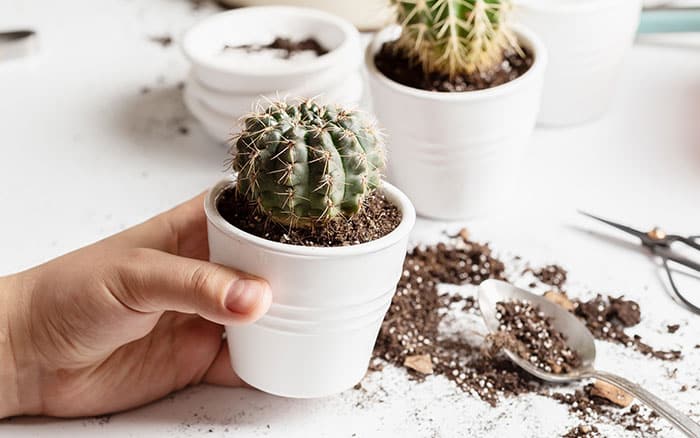As we head into autumn it’s important to remember to take steps now to protect the tender plants we have growing or displayed in pots in the garden. Use these tips to protect your plants over the colder months.
Plants that need to be stored under cover
Succulents and cacti
The first plants that need protection are succulents. ‘Succulent’ is the name given to plants that have thick fleshy leaves which store water.
Cacti are included in this group but not called succulents. Although they too store water, they do this in their stem as they generally don’t develop leaves.
Whilst succulents and cacti can all cope with drought, most suffer greatly if overwatered.
Some can cope with prolonged cold, but most of them can’t deal with prolonged spells of cold and wet, and definitely not frost.
So, these all need to be brought indoors now. Keep them in a frost-free environment and water infrequently during the late autumn and winter months.

Dahlias
Dahlias are very fashionable now. Rightly so as their brightly coloured flowers continue to delight us from late summer well into late autumn.
However, they will not survive our winters without being given protection from the excesses of frost and rain.
The good news is you can leave them flowering right up until and after the first frost hits them. But then you need to act quickly. There are two main ways of protecting them.
The first is to dig up the tubers, remove excess soil, and store them over winter in a dark, dry, frost-free environment. This is the safest way of protecting the tubers because if your soil is heavy clay, you live in a cold region, or they are growing in frost pocket dips, leaving them in the ground is risky business. If any of these situations apply to you then, to be safe, they should all be dug up and stored over winter.
The second way is to leave them in the ground and just cover the soil above and around them with a thick layer of a protective mulch. Use leaf mould or bark chippings as the layer of mulch.

Cannas
Cannas add a great splash of summer colour to the exotic garden. They are more tender than Dahlias and will not survive a frost.
To be safe dig them up before the first frosts arrive, put them in pots and store in a frost-free place with minimal watering until spring.
Pelargonium
Treat those growing in pots in the same way as succulents; move them into a frost-free greenhouse.
If you’ve planted them in the border dig them up now and trim them back to a neat shape. Then, they can be put in pots to store. Or, as the Victorians used to do, shake off excess soil and hang them upside down in a frost free, dark place.
Banana
The two main types of banana plants grown in the UK are the mainly green leafed Musa banjoo and the mainly red tinged leaf Ensete ventricosum (Ethiopian banana).
Musas are generally hardier than the Ensete and can stay planted out. On the other hand, Ethiopian banana plants should be lifted before the first frosts, put into pots, and overwintered under glass.
Plants that can stay outside with protection
Tree ferns
If you have a prized large specimen growing in your garden, you need to protect it over winter. You need to do this before first frosts hit and excessive winter wet conditions arrive.
Cover the top of the tree, known as the crown, by bending the old leaves over it and then cover and tie in the top with horticultural fleece. Putting straw in and amongst the bent over leaves at the top will also help give extra protection.
Olive trees
Although quite tough, harsh frosts and severe winds can damage the leaves making them look unsightly.
To keep them looking healthy and attractive it’s ideal to either put horticultural fleece over them or surround them with a wind break during the winter months.
Smaller plants in pots can be moved into an unheated greenhouse or conservatory.
Cordylines
There are several different colour leaf varieties available. Generally, the plain green and cream-edged leaf ones are tougher than the red leafed varieties.
Where possible gather the leaves together and tie string around them and then cover with horticultural fleece.


Leave A Comment